From its introduction, QoR offered three shimmery shiny special effect colors in tube format: Iridescent Pearl, Iridescent Silver, and Iridescent Gold. The summer of 2022, QoR added three Interference paints available in the “Reflective” six pan set: Interference Violet, Interference Blue, and Interference Green. The original three Iridescent watercolors are also part of this half pan set. This article will focus on these shiny paints, and show some of the aesthetic possibilities they offer.

What they are:
QoR Interference and Iridescent paints use pigments formed by coating mica flakes with Titanium Dioxide. Iridescent Gold is an exception, and has both an iron oxide pigment and Titanium Dioxide over the mica. Coating the thin, translucent, and reflective mica platelets with very thin layers of pigment creates a situation where light reflects and refracts between the microscopic layers. The thickness of the pigment layers, the nature of the pigments used, and the interaction with light results in the different colors and effects we see. Other than the coatings on the mica, there are no pigments in these paints. Their reflective nature means the Iridescent and Interference paints cannot be read in a spectrophotometer. Because of this, they have a lightfast ratings of “NA”. All six of these watercolors granulate.
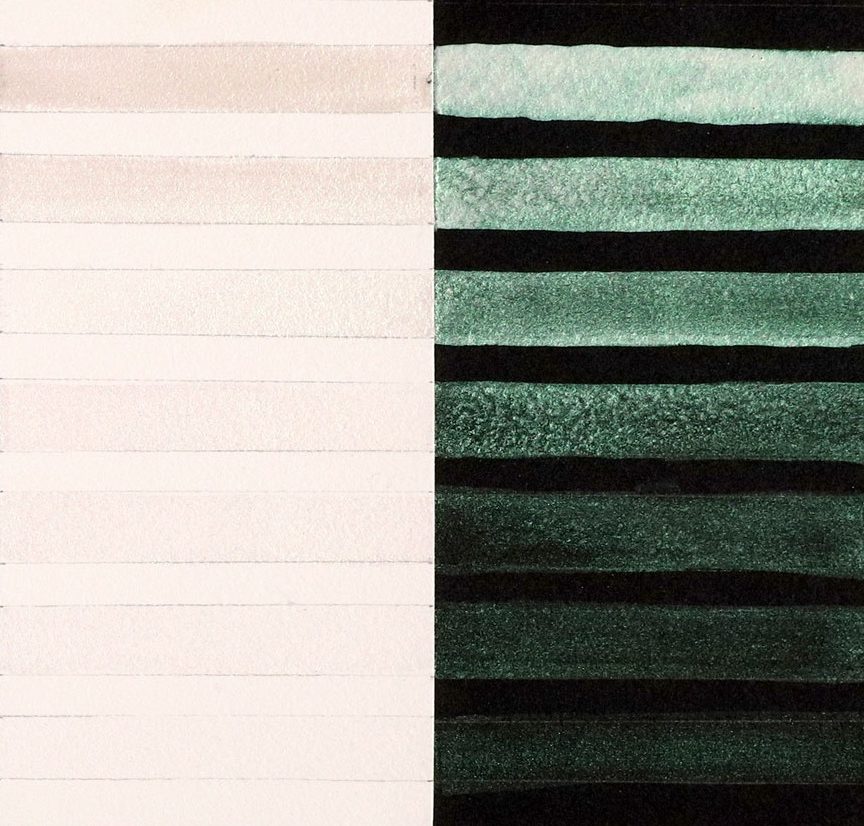
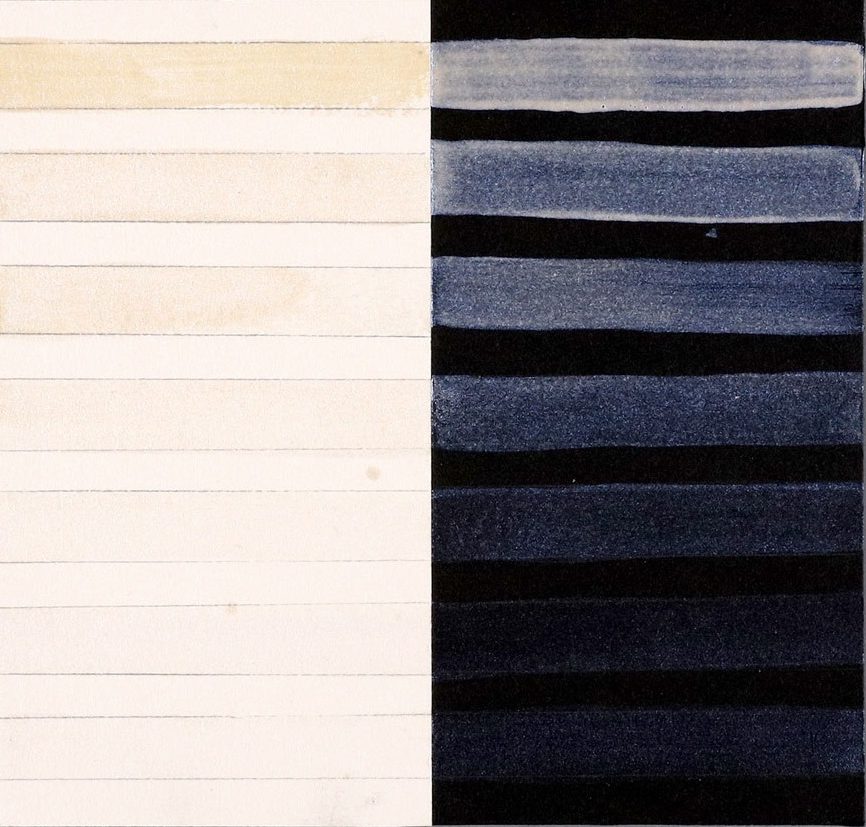

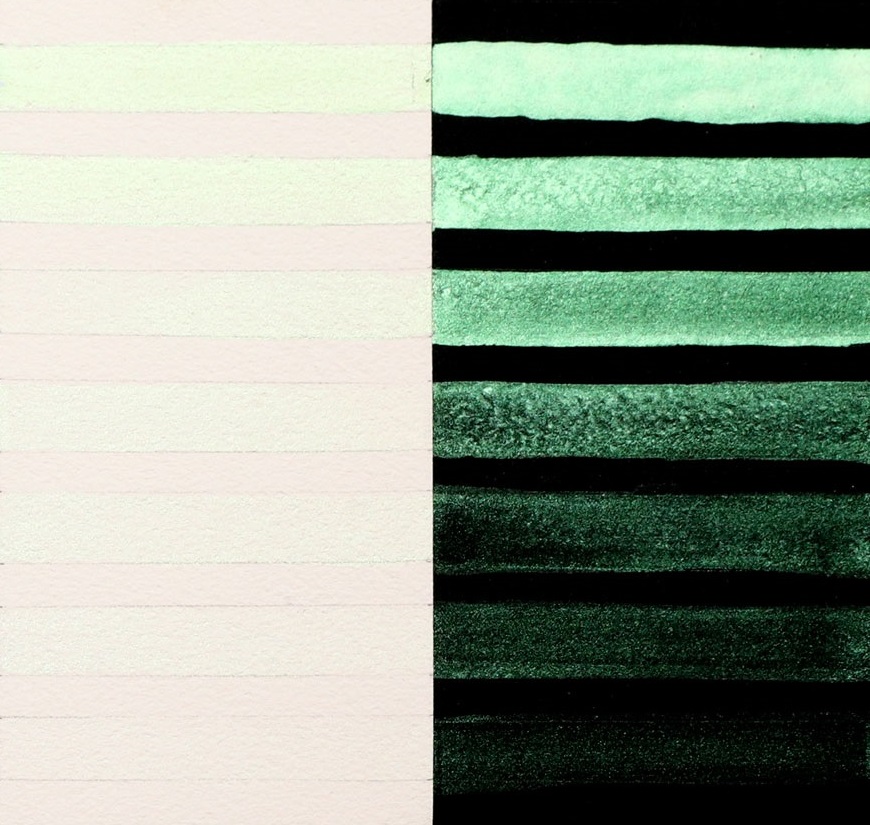
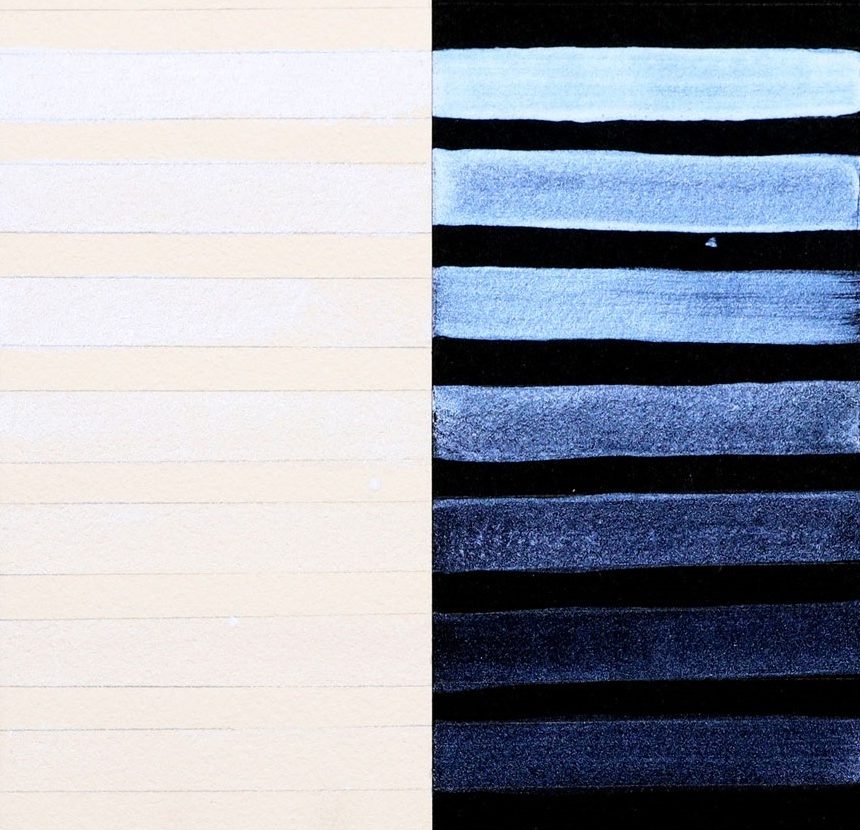
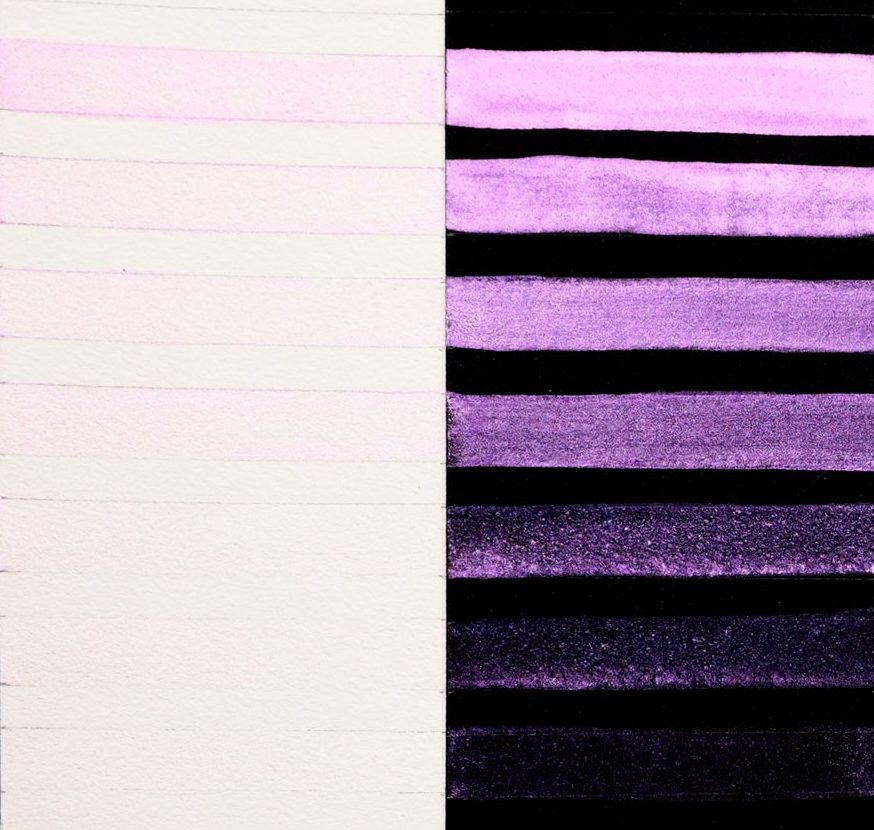
Interference paints visually sing when used in a transparent manner, and their colors shift depending upon the viewing angle and lighting (Image 2). The same diluted wash on top of black or white will appear totally different. Over white paper, Interference washes are more subtle and have a tendency to flash the complementary color. Over black paper, these are strong and vibrantly colorful paints with an unapologetic shimmer. Interference watercolors are most beautiful when used thinly as a glaze or wash. Thickly applied in masstone, the Interference paints may appear whitish and opaque.
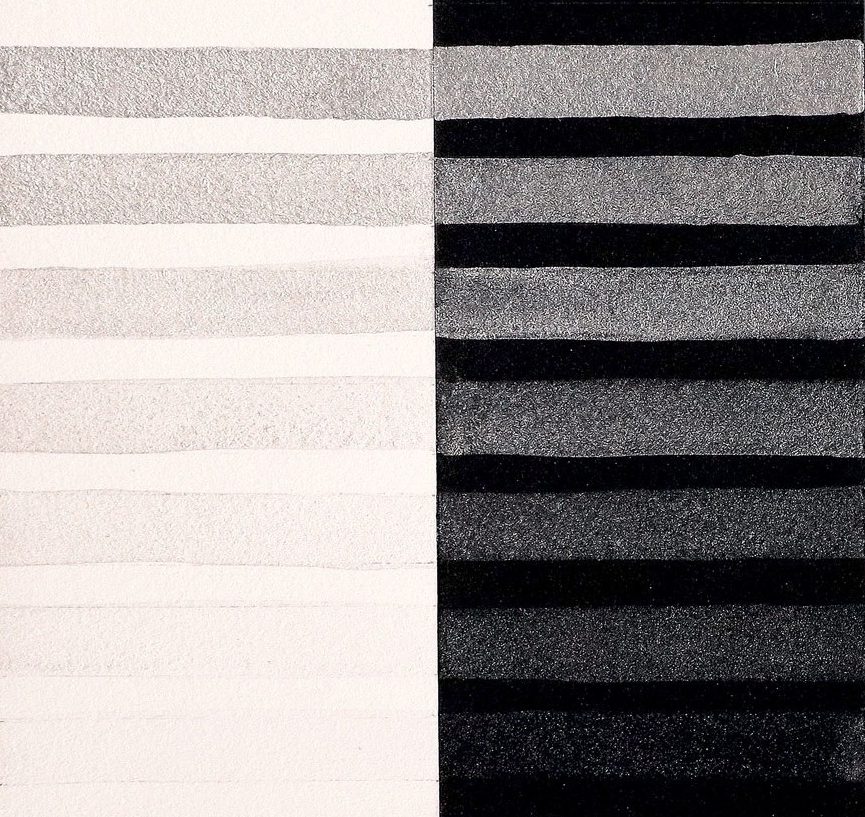
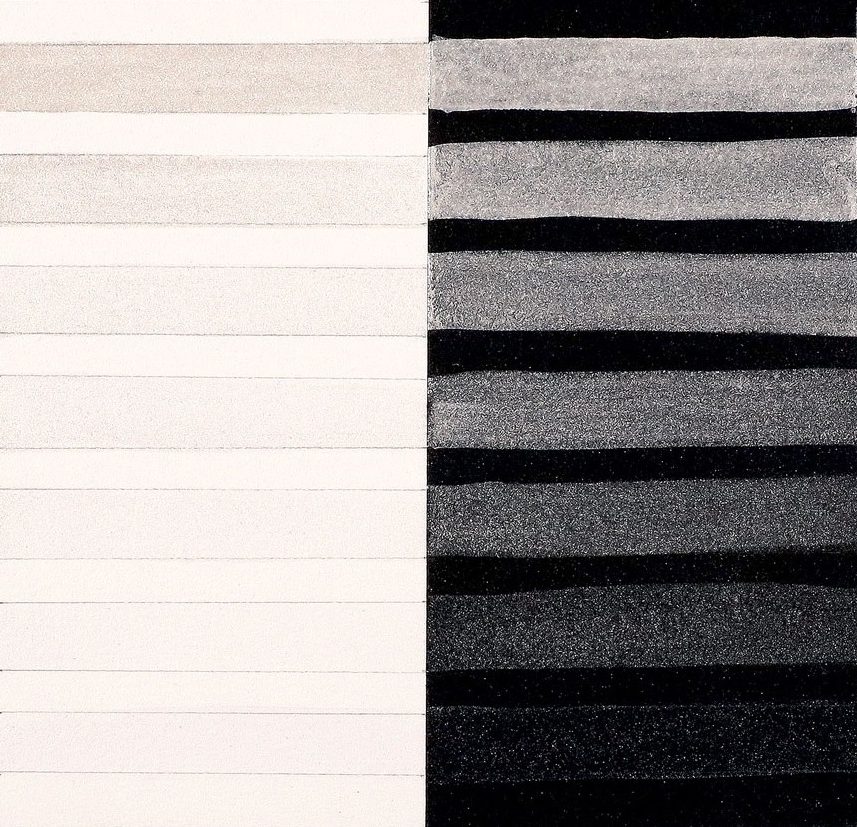

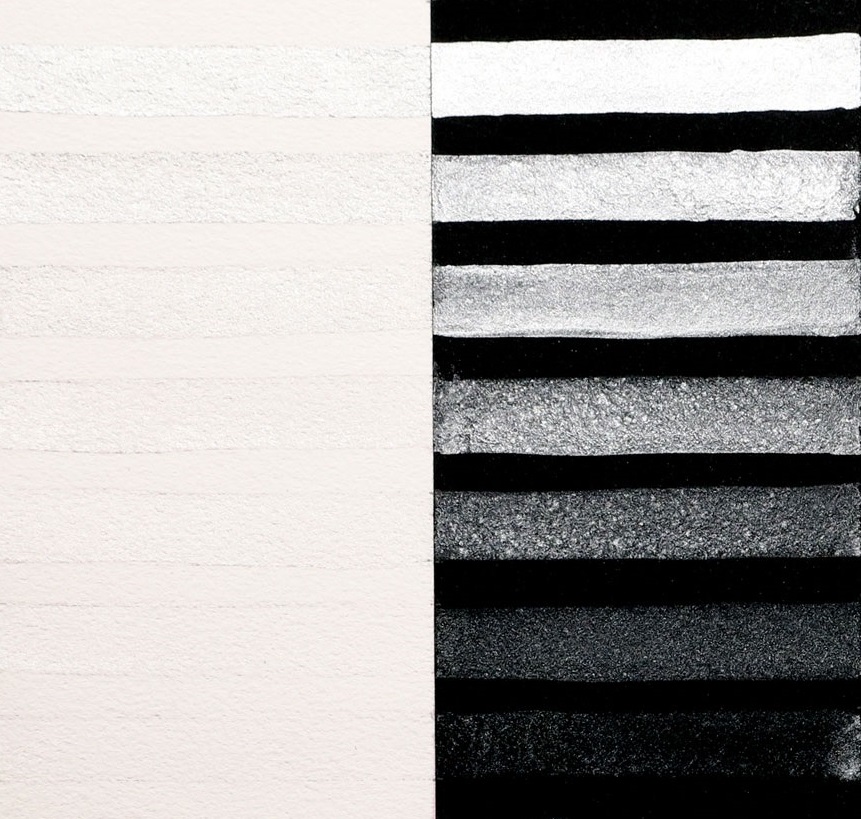
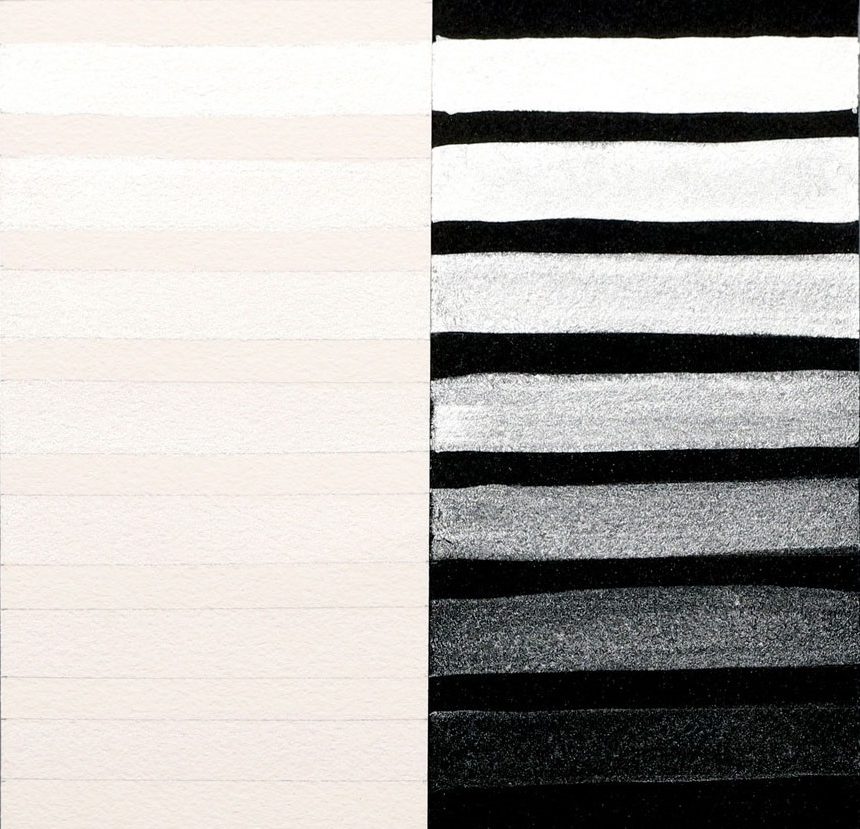
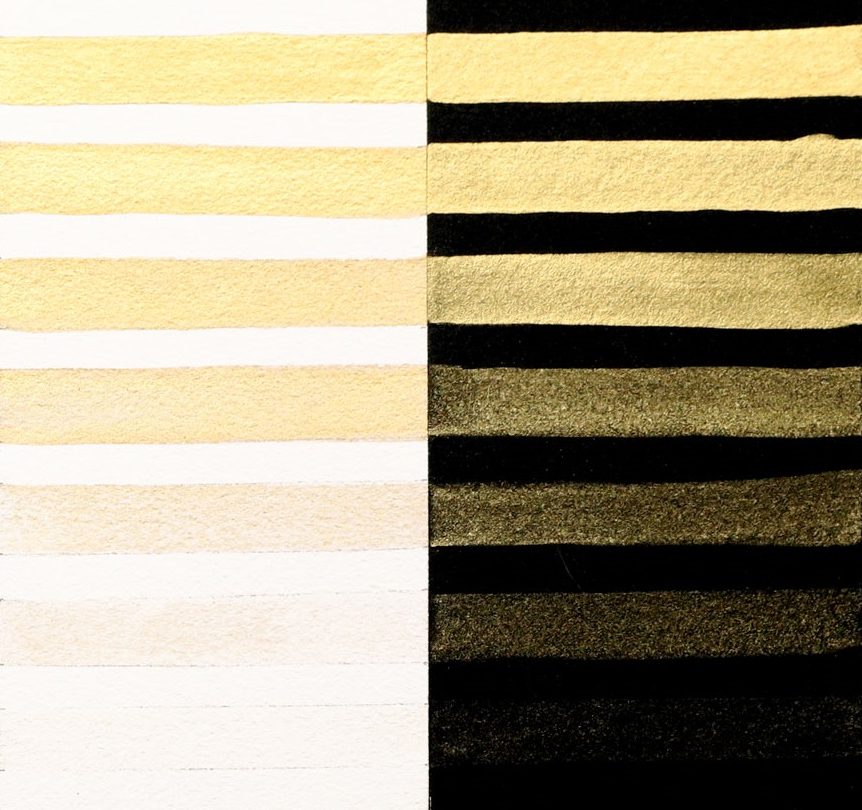
Iridescent paints create beautiful, slightly reflective surfaces when painted out transparently (Image 3). When used opaquely, they can provide a solid reflective surface with the appearance of glistening gold, silver, or opalescent pearl. These paints are true to color on black or white paper, although their color can appear stronger on black. Iridescent Silver is a mixture of Iridescent Pearl and Carbon Black (PBk7), so the Silver and Pearl can look alike when glazed over a black surface.
Mixing with other colors
Interference and Iridescent QoR paints may be mixed with other colors. These reflective paints readily separate out in multi-color washes, so stirring often and thoroughly is important when loading a brush. Transparent paints are better mixing partners since they will not cloud the reflective nature of the coated mica platelets the way an opaque paint addition might.
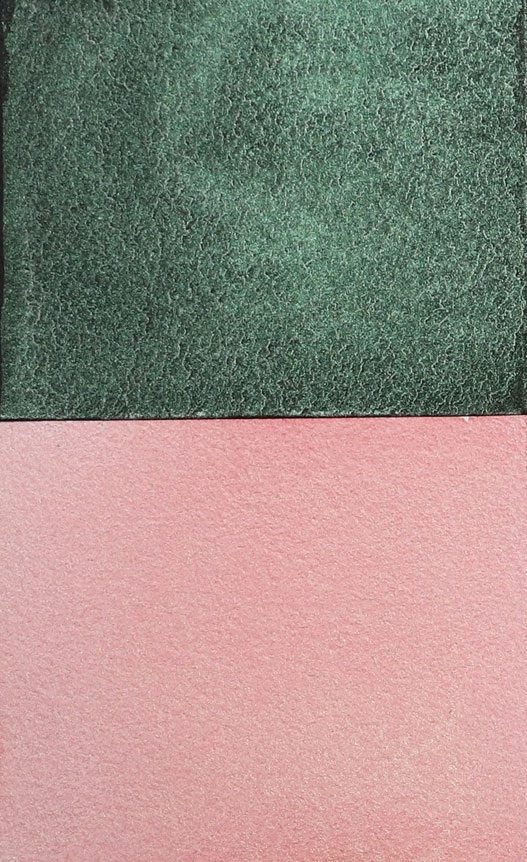

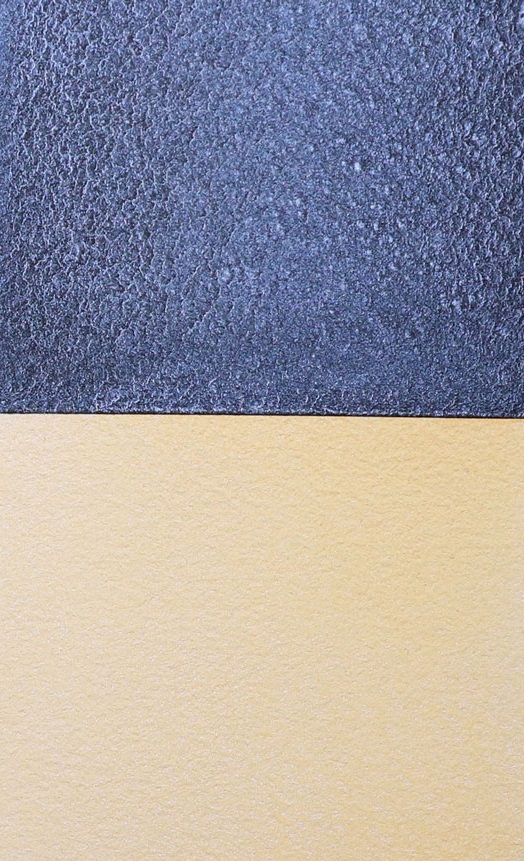
One beautiful aspect of the Interference paints is the mutability of what is seen, or available to be seen, in a single painting. A viewer’s perception of reflective shimmer and color in a single painting can change depending upon lighting and point of view. The possibilities expand further when an Interference paint is combined with non-Interference paints. On black paper, the Interference paint tends to dominate while against a lighter background, the non-Interference color might easily take charge (Image 4). Mixing with complements may emphasize color variance in what a viewer sees, while additions of the same or analogous colors create more subtle differences. When an interference paint dominates in a wash, that paint’s mutable reflective color shimmers against the stable background of the added color. When the non-interference paint prevails, the result may be a field of translucent color with a glistening reflective veil that appears and disappears as the lighting or view point shift.
Interference watercolors have a low tint strength, so pay attention when mixing with other paints and only add a tiny bit of the other color at a time, mixing and testing between each addition. QoR Iridescent watercolors are stronger in tint strength than the Interference paints, but care should still be taken when creating mixes.

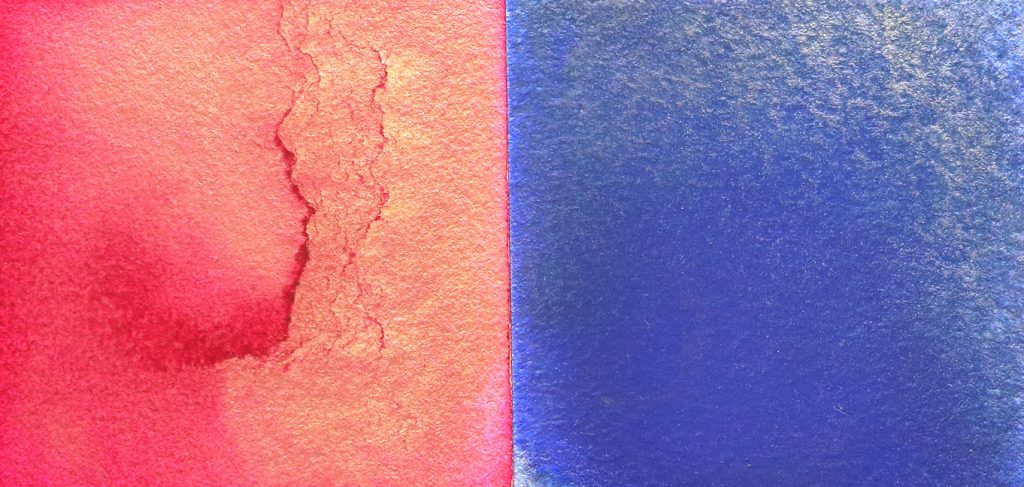
When puddles of diluted mixed paint are poured on watercolor paper, the Iridescent or Interference can separate out from other pigments. The examples in Image 5 show a mix of Iridescent Gold with Quinacridone Magenta and with Ultramarine Blue. Perhaps because the Ultramarine granulates, its gold partner appears in scales and wisps rather than as a mostly solid mass.
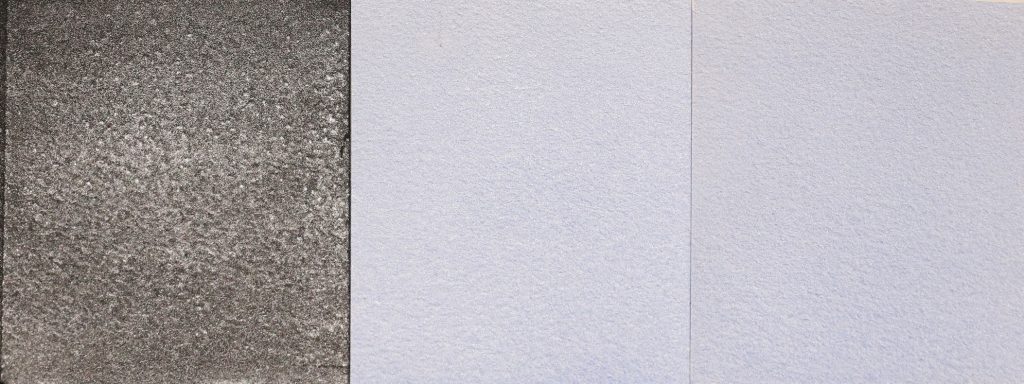
Adding Iridescent Pearl to a transparent watercolor will endow that color with a pearlescent quality (Image 6). This opalescent quality may be striking or very subtle, depending on the mixing ratio, dilution, and surface over which the mix is placed. When a very small amount is used, Iridescents and Interference paints can be subtle enough to only be noticed under certain lighting or in specific viewpoints. Using them this way is like including a lovely surprise for the viewer to discover.
Glazing

Interference and Iridescent QoR paints may also be layered in washes over other colors (Image 7). Due to the mica, great care should be taken when glazing over these reflective watercolors as they may lift with the application of a wet brush.
Drawing with a dip pen

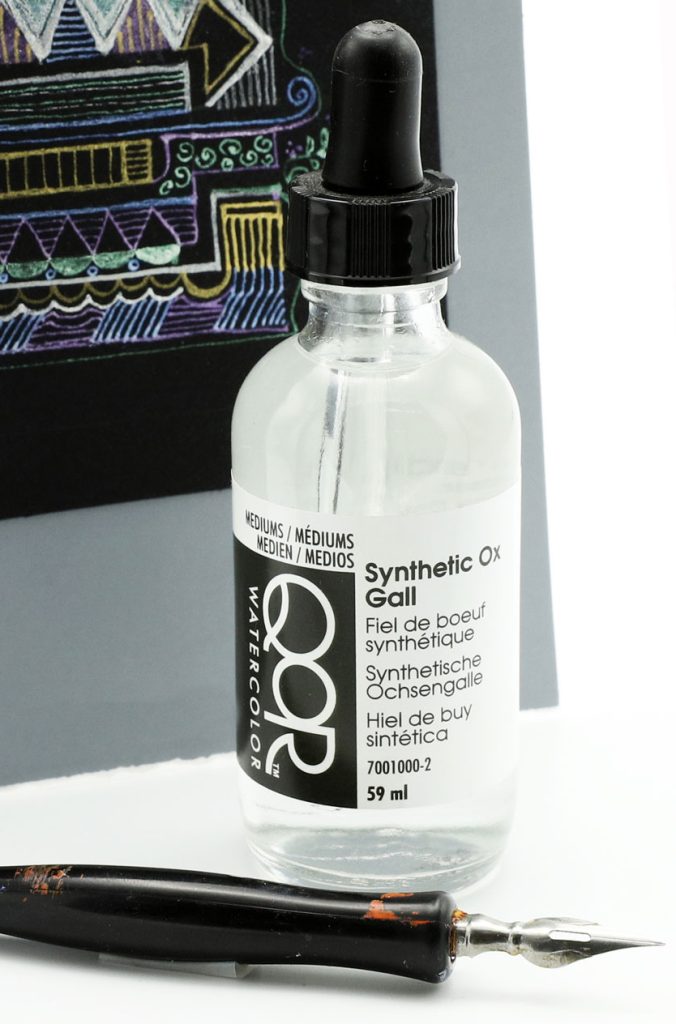
Paints were diluted to be liquid enough to flow but also retain a pleasingly intense color.
A simple dip pen with a replaceable nib works as a calligraphic tool to draw and write with these paints (Image 8). We favor a pointed nib with a bowl, shaped like an upside-down water drop. We mixed the paint with water to the desired consistency and dilution, forming a puddle on the palette. We loaded the nib with a brush before applying practice lines to a scrap of the paper being used. When the paint is not flowing from the nib as desired, a tiny bit of Synthetic Ox Gall can be added to the mixture. The additive may be mixed into the water used to dilute the paint, or a drop of the additive can be placed on the palette and a brush used to lift a tiny bit of it to add to the diluted paint.
Wet-in-wet applications:


When diluted and applied to wet paper, these paints will move in the active and intriguing ways shown by many other QoR watercolors. Slightly damp paper, shiny wet paper, and puddles of water on paper will all call forth different behaviors. This can be seen in Image 9. The paper was placed on a flat surface and a rectangular area brushed over with water. As the paper bowed slightly up in the center from the water, water moved to the edges. The differences in wetness on the paper created different levels and types of paint movement. There is greater paint movement and color diffusion where puddles formed.
These special paints offer new and exciting possibilities, and shout or whisper in your paintings depending on how they are used. We encourage you to experiment with the one you find most interesting, and see where the adventures in shimmers might take your artwork.
Information about GOLDEN and Williamsburg Interference and Iridescent paints may be found through the reference links below:
- GOLDEN Tech Sheet, Iridescent and Interference Acrylics
- Just Paint article, Layering and Mixing with Iridescent and Interference Acrylic Paint
- GOLDEN Video, Pouring with [Acrylic] Interference & Iridescent Colors
- GOLDEN Video, Pouring with [Acrylic] Interference & Iridescent Colors
- GOLDEN Video, Beguiling Iridescent [Acrylic] Colors from Golden
- Just Paint article, Not All That Glitters Is Gold – Williamsburg Iridescent and Interference Oil Colors
About Cathy Jennings
View all posts by Cathy Jennings -->Subscribe
Subscribe to the newsletter today!

Great information!
Questions:
Workability golden and Williamsburg paints on smooth-on products such as polyurethane resins.
Recommended mediums for airbrushing above paints.
Hello,
We have not tested these combinations of products, and would suggest testing to be sure everything dries and adheres as desired before using the layering in an artwork.
Golden High Flow Acrylics are ready to be airbrushed once shaken well. Fluid Acrylics can be modified with Airbrush Medium to make them sprayable, we recommend starting with a 1:1 ratio. More information may be found in the Airbrush Tech Sheet which may be found at this link:
Thank you!